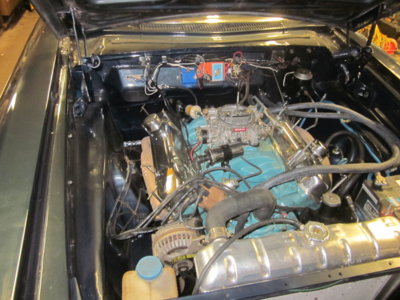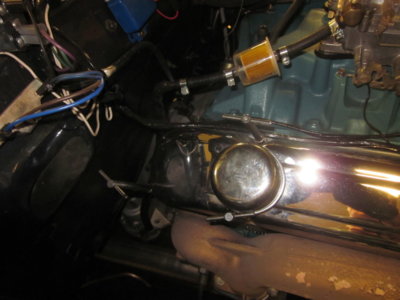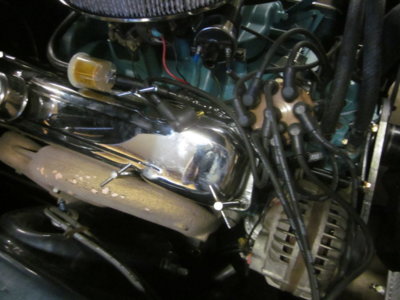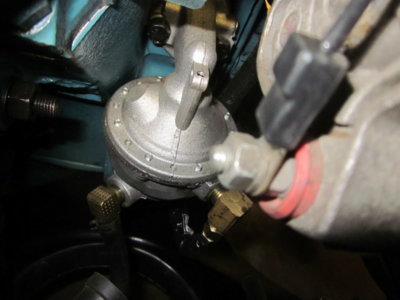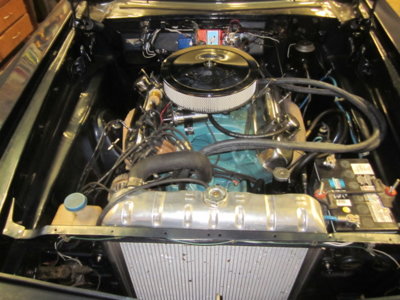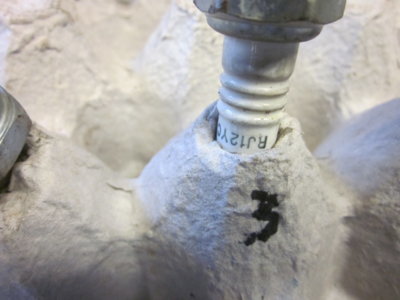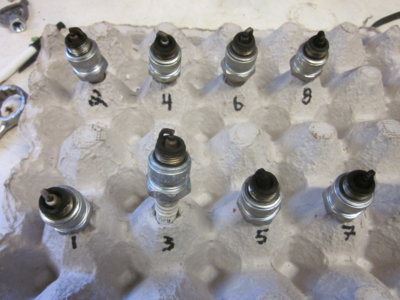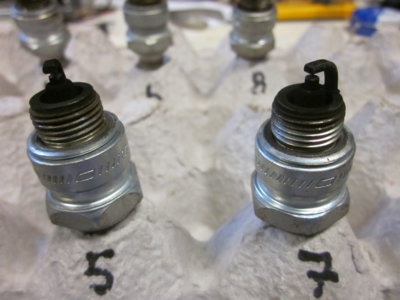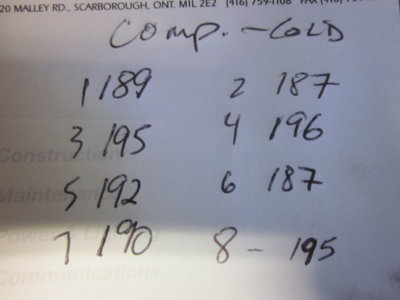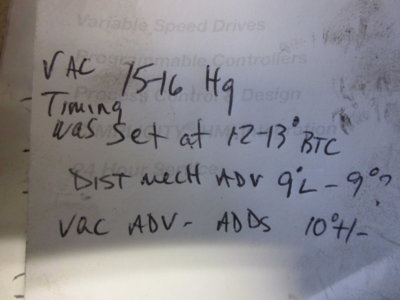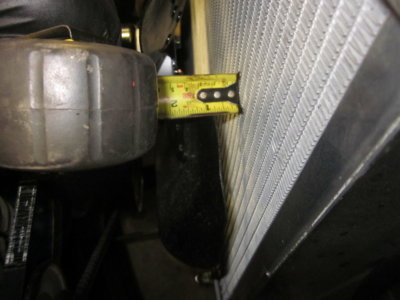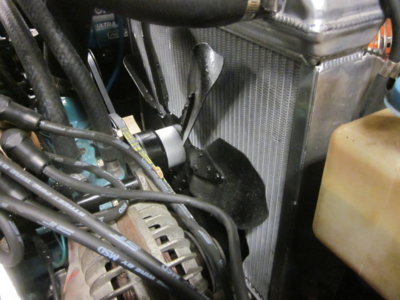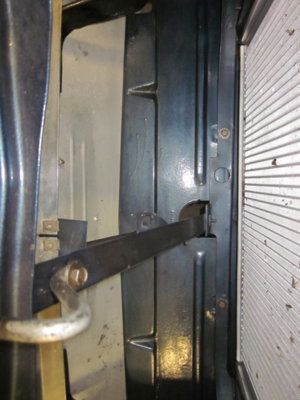Glenwood
Well-Known Member
- Local time
- 12:12 AM
- Joined
- Jun 19, 2015
- Messages
- 2,929
- Reaction score
- 2,848
- Location
- Kawartha Lakes, Ontario
I could use some schoolin' on fine tuning my RB.
I built this motor in the spring and did the cam break-in afew months ago and it now has approx 500-700 miles on it (speedometer/odometer is closer to kilometers when I checked against a gps). First oil change last week to dino 10w40 with a zinc additive. No surprises thankfully!
A few days ago on Saturday, I attended a Fall cruise with the local mopar group, which included some beauties (I'll post some pics of these if you wish). Well the temperature was over 90F and I thought I was in for some trouble! I almost cancelled but gave it a shot. Turns out I was the only one of the group that was affected by the scorching heat. Yeah, I know 90F is nothing like you south western guys are living with, but it is nasty for up here!
Car is/was running fine and the temperature gauge generally sits in the middle and drifts upward until the stat opens and it usually falls back to the middle. This has been consistent since I started driving it in August. I do not have aftermarket gauges yet, but seems normal for it with the 180 stat.
Driving along the open roads was fine as the outside temperatures started to rise. As we pulled into the first town, some light traffic slowed things down for a few minutes and the temperature started to rise on the gauge a bit, but nothing alarming. The engine however, was now stumbling a bit and eventually stalled in the parking lot for our first stop. Started easily to park though.
We left but the car had not cooled enough and I noticed it stumbling as I waited in line at the stop sign. It hesitated as I turned but got moving. The temperature gauge showed slightly higher than normal but was dropping as I drove at about 50 mph. First stop sign, waited about 30 seconds for my turn and stalled. Started but was sputtering a bit. I continued to drive for a bit until I slowed to stop at the side of the road where it stalled. It would start if I floored it, but would sputter when I put it into gear. It even started to diesel when I turned it off. Temperature gauge was a bit higher than normal, so I figured I had heat soak going on and vapour lock?
I managed to get it into the shade to let it cool, even though it did not boil-over or overheat. Once it cooled and started up again, one of the mechanics with us, adjusted the idle screws a bit which seemed to help the rest of the journey.
Yesterday, I ran the motor in the shop (which was about 85F) and the heat that was coming off of the rad/fan was incredible. Even with the hood open, I could not touch any metal parts on the engine like the coil or chrome covers, etc., without getting burnt. Even my chrome timing light became so hot that I had to wrap it with a rag. The temperature gauge was again slightly higher than normal and was not overheating. I assume the rad is doing its job to cool the motor, but I'm wondering if the engine is just running too hot.
I have a few questions:
How does the timing affect the engine temperature?
Could exhaust manifolds be too restrictive for certain cam designs and cause excess engine heat, besides the heat they climb too?
While a shroud should help with temperatures in traffic, can it make any difference with engine compartment temperatures?
Here's the engine specs and some analysis info.
I built this motor in the spring and did the cam break-in afew months ago and it now has approx 500-700 miles on it (speedometer/odometer is closer to kilometers when I checked against a gps). First oil change last week to dino 10w40 with a zinc additive. No surprises thankfully!
A few days ago on Saturday, I attended a Fall cruise with the local mopar group, which included some beauties (I'll post some pics of these if you wish). Well the temperature was over 90F and I thought I was in for some trouble! I almost cancelled but gave it a shot. Turns out I was the only one of the group that was affected by the scorching heat. Yeah, I know 90F is nothing like you south western guys are living with, but it is nasty for up here!
Car is/was running fine and the temperature gauge generally sits in the middle and drifts upward until the stat opens and it usually falls back to the middle. This has been consistent since I started driving it in August. I do not have aftermarket gauges yet, but seems normal for it with the 180 stat.
Driving along the open roads was fine as the outside temperatures started to rise. As we pulled into the first town, some light traffic slowed things down for a few minutes and the temperature started to rise on the gauge a bit, but nothing alarming. The engine however, was now stumbling a bit and eventually stalled in the parking lot for our first stop. Started easily to park though.
We left but the car had not cooled enough and I noticed it stumbling as I waited in line at the stop sign. It hesitated as I turned but got moving. The temperature gauge showed slightly higher than normal but was dropping as I drove at about 50 mph. First stop sign, waited about 30 seconds for my turn and stalled. Started but was sputtering a bit. I continued to drive for a bit until I slowed to stop at the side of the road where it stalled. It would start if I floored it, but would sputter when I put it into gear. It even started to diesel when I turned it off. Temperature gauge was a bit higher than normal, so I figured I had heat soak going on and vapour lock?
I managed to get it into the shade to let it cool, even though it did not boil-over or overheat. Once it cooled and started up again, one of the mechanics with us, adjusted the idle screws a bit which seemed to help the rest of the journey.
Yesterday, I ran the motor in the shop (which was about 85F) and the heat that was coming off of the rad/fan was incredible. Even with the hood open, I could not touch any metal parts on the engine like the coil or chrome covers, etc., without getting burnt. Even my chrome timing light became so hot that I had to wrap it with a rag. The temperature gauge was again slightly higher than normal and was not overheating. I assume the rad is doing its job to cool the motor, but I'm wondering if the engine is just running too hot.
I have a few questions:
How does the timing affect the engine temperature?
Could exhaust manifolds be too restrictive for certain cam designs and cause excess engine heat, besides the heat they climb too?
While a shroud should help with temperatures in traffic, can it make any difference with engine compartment temperatures?
Here's the engine specs and some analysis info.

